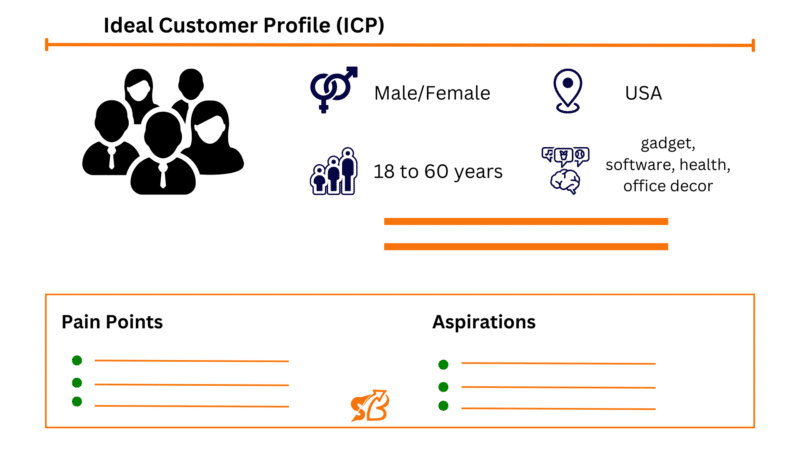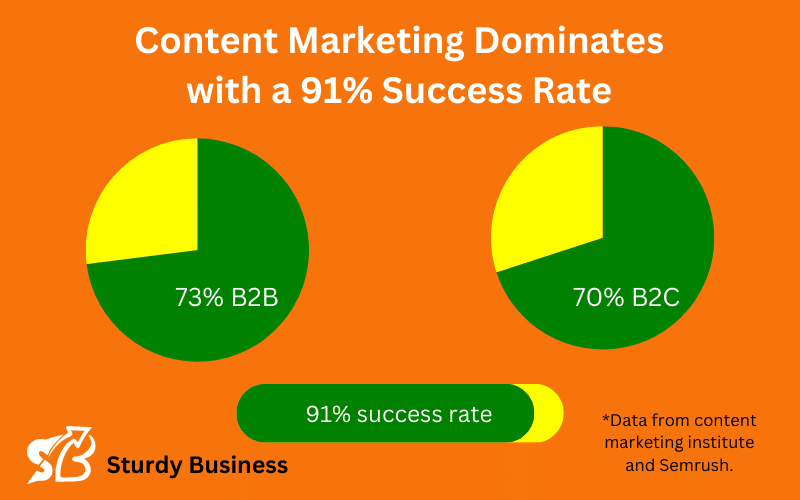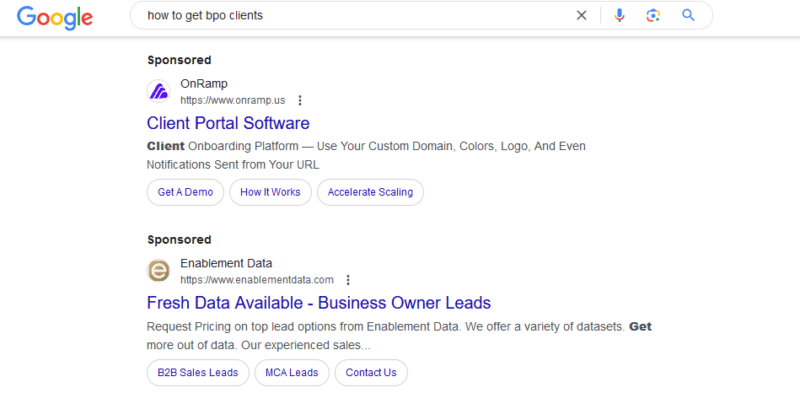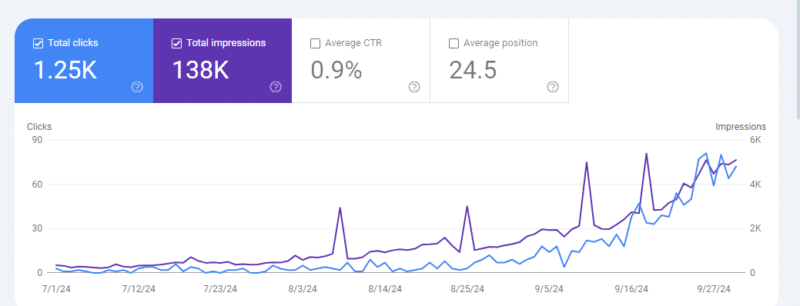You might have built a great SaaS product. But having a great product is only half the battle. To make your SaaS app successful, you need to market it efficiently.
As a content marketer, I’m in touch with hundreds of SaaS owners. Most of them make the mistake of not working on the marketing side as effectively as they build their products.
They spend months and months building an incredible product, but they don’t strategize about reaching out to potential clients the way they should.
That’s why most of them never see the real potential of their products, at least, for the first few years until they realize it.
So, to help you see the highest potential of your SaaS, we’ve discussed 11 strategies that almost all the billion-dollar SaaS companies leverage, and you can too, to make your SaaS the next big company.
Before we move forward to the strategies that can bring you your first sales or help your SaaS grow massively, here’s the first step that could save you tens of thousands of dollars in the long run.
The first step includes building an ICP and an effective marketing strategy to target your potential customers. Once this part is ready, you can move forward to the 11 best practices that multi-million and billion-dollar SaaS companies use to stay ahead in the market.
On this page
Always start with an ideal customer profile (ICP):
If you’re planning to handle your SaaS marketing on your own, this is a crucial step, and it’s often where many SaaS founders make mistakes.
They overlook the importance of focusing on their target audience, and that’s why they often don’t get the highest ROI from their marketing efforts.
An ICP means clearly defining who your ideal customer is. Who will benefit most from your SaaS solution?
Before launching any campaigns, take the time to conduct thorough audience research to understand the needs, pain points, and behaviors of your target market.
Your buyer persona should look like this one:

This step is critical because it will shape every aspect of your SaaS marketing strategy moving forward.
Remember, your product can’t solve problems for every individual or business. Trying to appeal to everyone will only result in wasted time, effort, and marketing dollars.
Instead, focus on a niche or buyer persona that aligns with your product’s core value and has the budget to pay for it. Once you’ve identified this target segment, focus on them with laser precision.
With your audience in mind, develop a marketing plan tailored to their specific needs and challenges.
It’s proven that concentrating on one market at a time makes your efforts more manageable and trackable.
Avoid spreading your resources too thin by attempting to go global before establishing a strong foothold in a local or regional market.
Developing a marketing strategy for your SaaS business:

Developing a robust marketing strategy for your SaaS business hinges on your specific goals. While many founders initially believe that the primary objective is simply to drive sales, you’ll soon realize that this is only part of the picture.
As your SaaS evolves, understanding that there are multiple dimensions to your marketing strategy becomes essential.
In addition to boosting sales, there are various critical objectives you should consider: Brand awareness, demand generation, lead generation, and feature awareness.
By focusing on these broader goals, you not only enhance your sales potential but also lay the groundwork for a strong brand presence.
In the beginning, your focus should be on driving sales, but your comprehensive marketing strategy should encompass all the key aspects of developing a sustainable brand.
So, here are three pillars that I believe you must focus on even from day 1 to get the most from your efforts.
Educate consumers:
By providing essential insights about your product and its features, you can establish your brand as a thought leader in your industry.
This not only empowers consumers to make informed decisions but also significantly influences their final choices.
Research shows that potential customers spend approximately 27% of their time independently researching solutions online before engaging with your sales team.
Therefore, when crafting your marketing strategy, focus on developing resources that educate your target audience about your SaaS.
This could include addressing common pain points, outlining the unique advantages of your SaaS, and demonstrating how your solution stands out from the competition.
Work on brand awareness from day 1:
If you’re just getting started, you might be thinking, your primary focus is sales, and branding can make things expensive.
But in the longer run, branding becomes way cheaper by resulting in loyal customers.
Consider this example: if someone is hungry and looking for food but doesn’t know any good places, they will turn to Google or ask for recommendations from friends.
Whoever comes first in their research gets attention.
Similarly, if you could build your brand and you’re everywhere, you will get way more attention than your competitors.
Primarily focus on building trust for conversions:
Once again, you build trust by presenting yourself as an authoritative brand. So, branding is the key.
The best platforms for establishing trust are social media, your blog, and websites where people leave reviews.
Modern consumers trust online reviews as much as personal recommendations from friends and family, with research indicating that 85% of customers rely on reviews when making purchasing decisions.
Therefore, actively share positive feedback and testimonials about your brand to bolster credibility.
Now, when you have a clear understanding of what to focus on, you can leverage these marketing strategies more effectively to market your SaaS product.
#1. Pay-per-click (PPC): The fastest way to acquire clients
You might not be aware that there are two fundamental types of marketing strategies: inbound marketing and outbound marketing.
Inbound marketing is when potential customers seek you out, typically through organic channels, because they need your service or are searching for a solution to their problem.
Outbound marketing, on the other hand, involves reaching out to potential customers to present your solution, like TV ads or social media ads.
In inbound marketing, PPC is the fastest way to acquire new SaaS customers. This is why many SaaS companies and startups prioritize pay-per-click ads at an early stage and continue utilizing them throughout their growth.
Here’s how it works:
When potential customers search for a solution or even your competitor’s brand on Google or other search engines, you can bid on specific keywords to appear at the top of search results as the best solution or alternative, leveraging your unique selling proposition (USP).
Here is an example of a PPC ad (search engine advertisement).

Due to its bidding nature, the cost of PPC depends on keyword demand, which means it can become expensive, especially in competitive industries.
Some SaaS companies even pay over $100 per click, which makes the customer acquisition costs (CAC) significantly higher.
This is why you need to adopt a well-rounded approach by utilizing multiple marketing strategies to balance your CAC.
For instance, in industries with a high customer lifetime value (CLV), such as accounting software, legal software, cloud computing, CRMs, or healthcare software, businesses are willing to pay more than $100 per click.
The problem with PPC is that you need a very high budget to acquire a few hundred potential customers and then roughly 2.5% will convert (as it’s industry average)!
Thus, you will burn money to target hundreds of potential customers to get a few paying clients.
Thus, it’s an expensive marketing strategy that people often can’t afford if they are bootstrapping.
If you’re a new SaaS company and don’t have a large budget to burn, you can leverage alternative strategies to target these high-value clients, which we’ll discuss shortly.
Lastly, if you’re leveraging PPC but not getting any paying clients, here’s a mistake that cost my friend literally thousands of dollars in his first PPC campaign.
Not targeting the right audience with the right keywords.
That’s why it’s often crucial to hire a PPC consultant to manage your campaign.
#2. SEO: The best cost-effective inbound strategy
As discussed earlier, when people are in need of a solution, they often ask friends for recommendations or, more commonly, research online.
The most widely used platforms for online searches are search engines like Google, Bing, Yahoo, and even newer AI-driven tools like Perplexity and ChatGPT.
This gives founders and marketers a huge opportunity to target potential customers during their sales journey through either PPC ads or SEO.
SEO is the process of optimizing your business website so that it appears on search engines against your targeted keywords.
SEO might seem complex, and without expert help, results can be difficult to achieve.
But here’s a basic outline to help you understand the steps involved in SEO that can make your SaaS product rank on search engines for targeted queries and drive organic traffic:
- Keyword research: Tools like SEMrush, Ahrefs, and Google Keyword Planner help you discover relevant search terms that potential customers are using.
- Create content: You can’t rank without content. Create high-quality content that aligns with the intent behind your chosen keywords.
- On-page SEO: Optimize your web pages with proper meta tags, internal linking, keyword placement, and structured data to improve search engine visibility.
- Link building: Build backlinks from trusted sites to gain credibility in the eyes of search engines, thereby boosting your rankings.
When all these steps are executed properly, you will start seeing an increase in traffic for your SaaS.
Many successful SaaS companies, such as Ahrefs, SEMrush, HubSpot, and Zoho, generate millions of free visitors through organic search by following these strategies.
The only drawback of SEO is that it takes time to see significant results.
For example, I started working on a brand-new project three months ago, and while it’s slowly growing, it’s now attracting around 80 visitors a day, mostly from Google.

So, patience is key. SEO will show a compound effect over time.
If you’re looking to invest in SEO marketing, you can consider my SEO services to enhance your SaaS marketing efforts.
#3. Social media for SaaS marketing:
Social media is another powerful platform to market SaaS products.
With over 5.17 billion people worldwide using social media, it’s clear why it has become an essential channel for companies across all industries.
As a SaaS company, you have the opportunity to engage with a global audience, build brand awareness, and drive customer acquisition through these platforms.
Recent studies reveal that 92.1% of small businesses actively market on social media, making it a no-brainer for any SaaS startup to include in its marketing strategy.
In short, if social media marketing isn’t part of your overall marketing plan, you’re missing out on a huge growth opportunity!
Here are two effective ways to leverage social media for marketing your SaaS:
Build profiles organically:
- You can establish your presence on key platforms like LinkedIn, Twitter, Facebook, Instagram, and YouTube.
- You can share valuable content, such as product updates, customer success stories, and educational resources.
- You can engage directly with your audience by responding to comments, hosting live Q&A sessions, and creating polls to gather feedback.
Organic social media growth helps build credibility, foster brand loyalty, and attract leads over time without spending on advertising.
Run paid ads:
Platforms like Facebook Ads, LinkedIn Ads, and Twitter Ads allow you to target specific audiences based on demographics, interests, and behaviors.
- With precise targeting, you can reach potential customers who are more likely to be interested in your SaaS product.
- Paid ads are ideal for scaling quickly, driving lead generation, and boosting brand visibility in a competitive market.
Combining organic efforts with paid social media campaigns is crucial for gaining brand recognition, establishing trust, and driving conversions.
#4. Offering freemium or free trials: A powerful saas marketing strategy
Offering freemium services or free trials can be a double-edged sword for many SaaS companies. While it helps in attracting a large number of users, the conversion rate from free users to paying customers is often lower than expected.
However, despite this challenge, many SaaS businesses use this strategy because of its massive benefits in terms of brand recognition and demand generation.
One of the key reasons why SaaS companies opt for freemium models is that they provide significant monetary benefits beyond direct sales. For instance, offering free tools can lead to:
- Brand awareness: By offering a free version of your SaaS, you make your product accessible to a much larger audience. This increases visibility, helping potential customers familiarize themselves with your brand.
- Backlinks: Many websites and influencers link to freemium tools or trials as a resource, generating thousands of backlinks. These high-quality backlinks not only improve your website’s SEO but can sometimes be worth millions in marketing value.
Take Ahrefs as a prime example.
Originally, Ahrefs didn’t offer any freemium tools, but after noticing that competitors who offered free tools were gaining a significant edge in terms of brand awareness and backlinks, they introduced their own freemium tool.
This strategy paid off. It helped them secure top rankings on Google and led to more organic traffic, all while building a strong reputation in their niche.
Some other examples of successful freemium SaaS models:
- Dropbox: With its highly popular freemium model, Dropbox grew exponentially by offering free storage space, with premium options for users needing more.
- Zoom: Known for its free video conferencing option, Zoom used the freemium model to expand its user base before converting them to premium services during periods of high demand.
Offering freemium services or free trials may not convert every user into a paying customer immediately, but it creates the foundation for long-term brand loyalty, improved SEO performance, and enhanced market visibility.
#5. Leverage the power of deals and discounts in SaaS marketing
Deals and discounts can significantly enhance your SaaS marketing strategy by attracting potential customers and encouraging them to see the value your product offers.
Not only do these promotions drive new sales, but they are also excellent tools for cross-selling and upselling existing customers to higher-tier plans or additional services.
However, it’s crucial to be strategic when offering discounts.
Constantly offering promotional deals can devalue your product and make your discounts feel like the standard price. This can diminish the perceived exclusivity of your offer, leading to lower conversion rates over time.
To maximize the impact of your deals and discounts, consider these key points:
- Timing is key: Offer promotions during key periods when people are more likely to buy, such as during holiday seasons, end-of-quarter sales, or major industry events. This strategy ensures that your offer feels special and timely.
- Scarcity and urgency: Creating a sense of scarcity or limited-time availability can boost your sales significantly. This encourages customers to act quickly to take advantage of the offer, driving higher conversion rates.
- Cross-sell and upsell opportunities: Use discounts to incentivize customers to upgrade their plans or purchase additional features. For example, offering a limited-time discount on a higher-tier subscription plan can push users to adopt more premium features, increasing customer lifetime value.
An excellent example of this is HubSpot offering a limited discount on their premium plans during Black Friday. This strategy not only increased their sales but also encouraged many customers to move up to higher-tier plans, improving overall revenue.
Thus, by leveraging deals and discounts, you can effectively drive more conversions and increase customer engagement.
#6. Referral marketing: A powerful strategy for saas growth
Referral marketing means encouraging your current customers to recommend your SaaS service to their networks.
This marketing strategy has proven highly effective, especially for SaaS companies.
In fact, it’s a win-win! You’re not only getting a promotion but you’re winning new clients with your clients’ credibility. It works like influencer marketing.
To maximize the potential of referral marketing, you should go one step further by introducing a referral program.
By offering smart incentives and rewards, you can motivate your customers to spread the word more effectively.
For example, providing users with access to additional features, discounts, or account upgrades for every person they refer can significantly boost participation in your referral program.
A well-known example of successful referral marketing is Dropbox, which offered users extra storage space for every friend they invited. This simple yet impactful strategy played a crucial role in Dropbox’s explosive growth.
#7. Leverage email marketing: A key SaaS growth strategy
You might think email marketing is outdated, but it remains one of the most effective marketing tools, especially in B2B SaaS marketing.
Email provides a direct and personalized way to maintain one-on-one contact with your users.
Through email, you can engage with customers regularly and provide them with relevant updates.
Some common types of SaaS marketing emails include:
- Onboarding emails (e.g., for product demos)
- Feature announcements
- Company newsletters
- New content notifications (e.g., webinars, blog posts)
- Surveys to gather feedback
- Regular check-ins to ensure customer satisfaction
It’s important to note that nearly half of SaaS users don’t fully utilize the product or log in more than once a month. This makes email marketing crucial for re-engaging inactive users, offering them helpful reminders, and ensuring they’re satisfied with your service.
Explore additional strategies to promote your SaaS
Lastly, there are many other strategies to promote your SaaS, and once your business is established, you should explore every opportunity to scale.
Don’t leave any stone unturned!
Consider cold outreach: It’s an outbound marketing strategy like cold emailing, which can deliver a remarkable $12 ROI for every $1 spent.
Other impactful strategies include hosting webinars to demonstrate the value of your product and engage with your audience in real time.
Podcasts can also be a valuable medium for expanding your brand’s reach, allowing you to share your insights and expertise with a wider audience.
Additionally, don’t overlook the potential of sponsored campaigns or influencer collaborations. Influencers can help amplify your brand’s message, especially if they have an engaged audience in your niche. A well-executed partnership can result in a significant boost in awareness and lead generation.
The key takeaway here is that clients are everywhere. Whether through cold emailing, webinars, or collaborations, there are many paths to success. And if you have the budget, it’s worth investing in diverse marketing strategies to maximize your reach and growth.
Remember, multi-channel marketing is often the best way to make sure that your SaaS reaches its full potential.